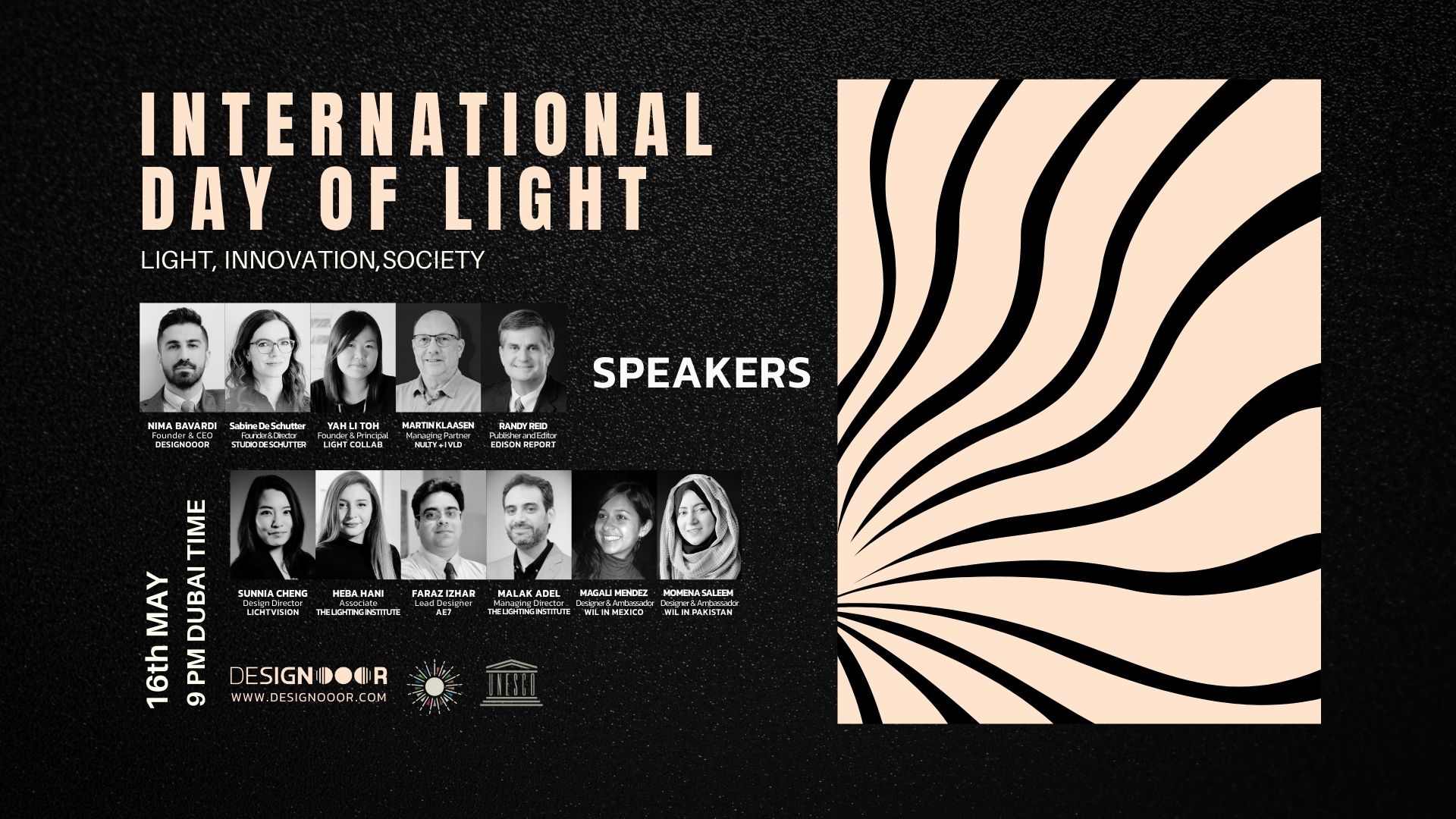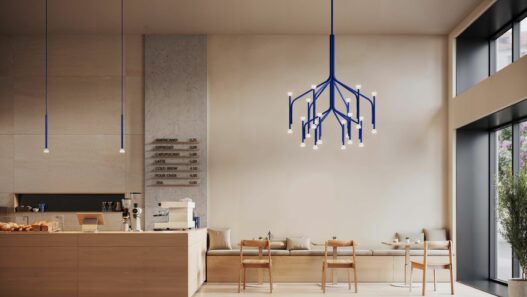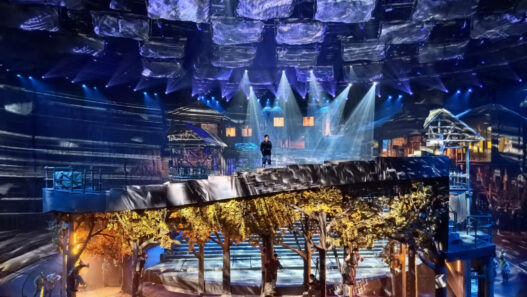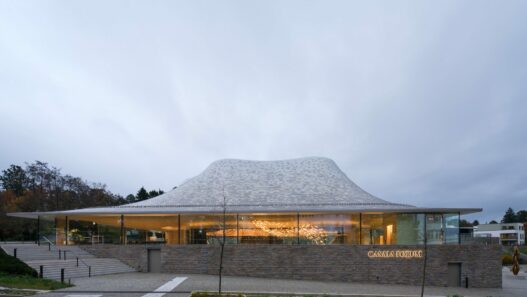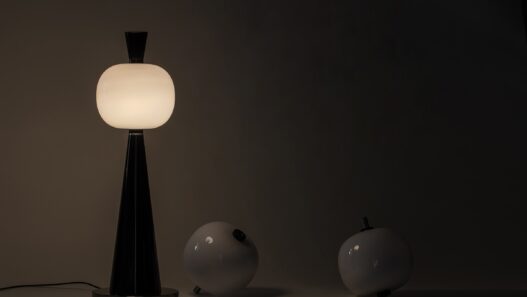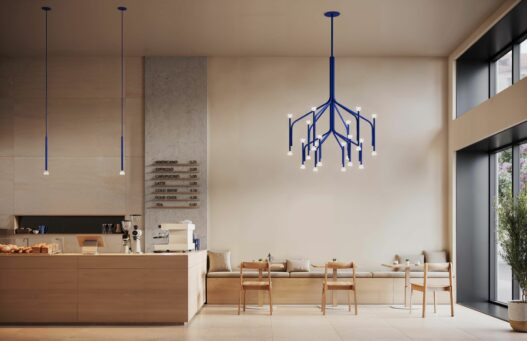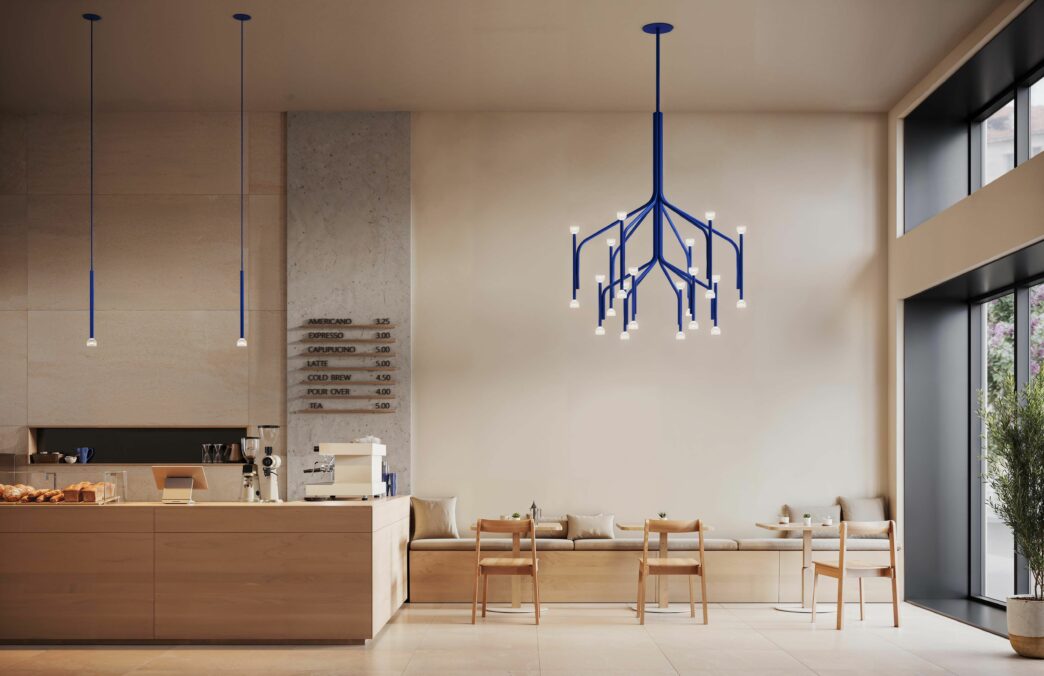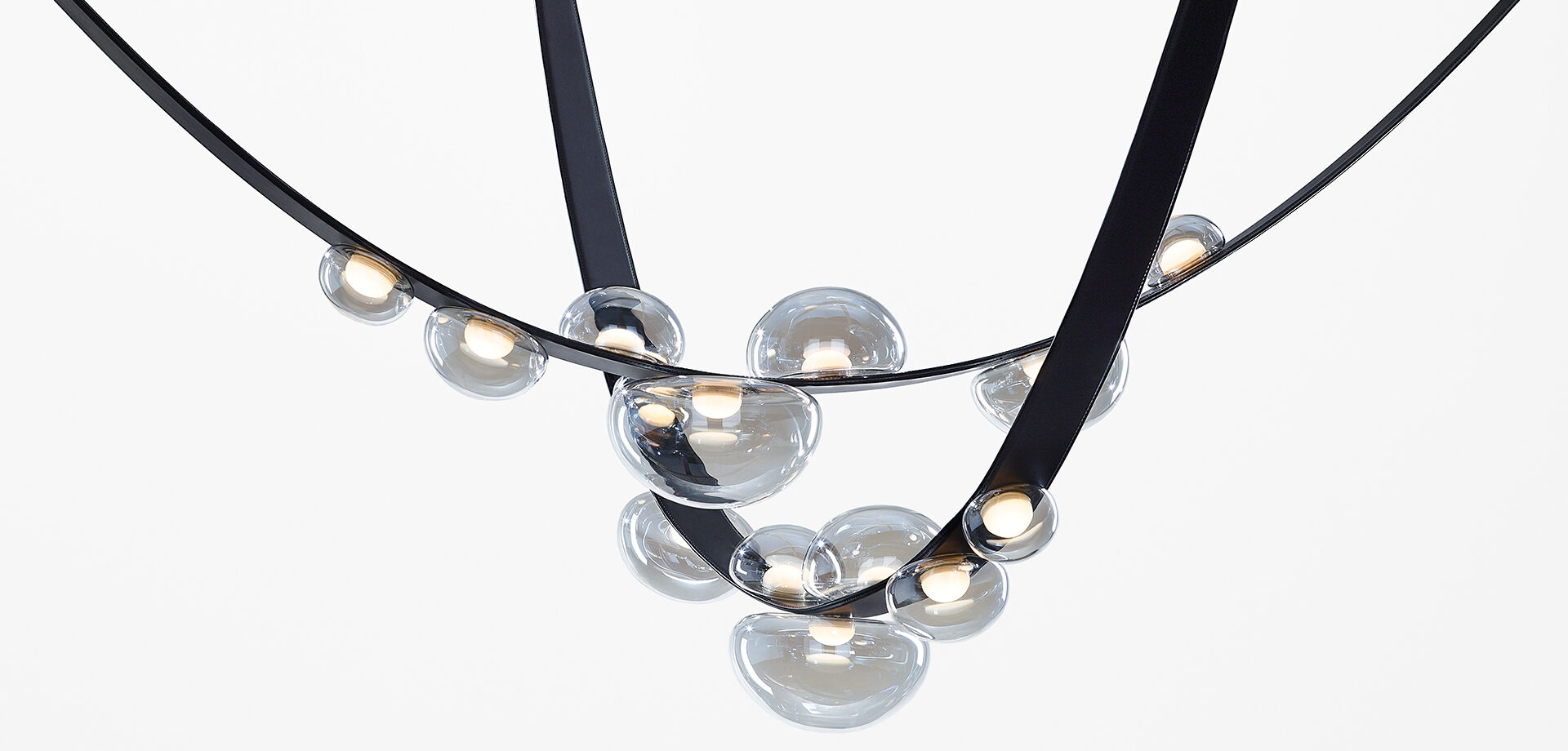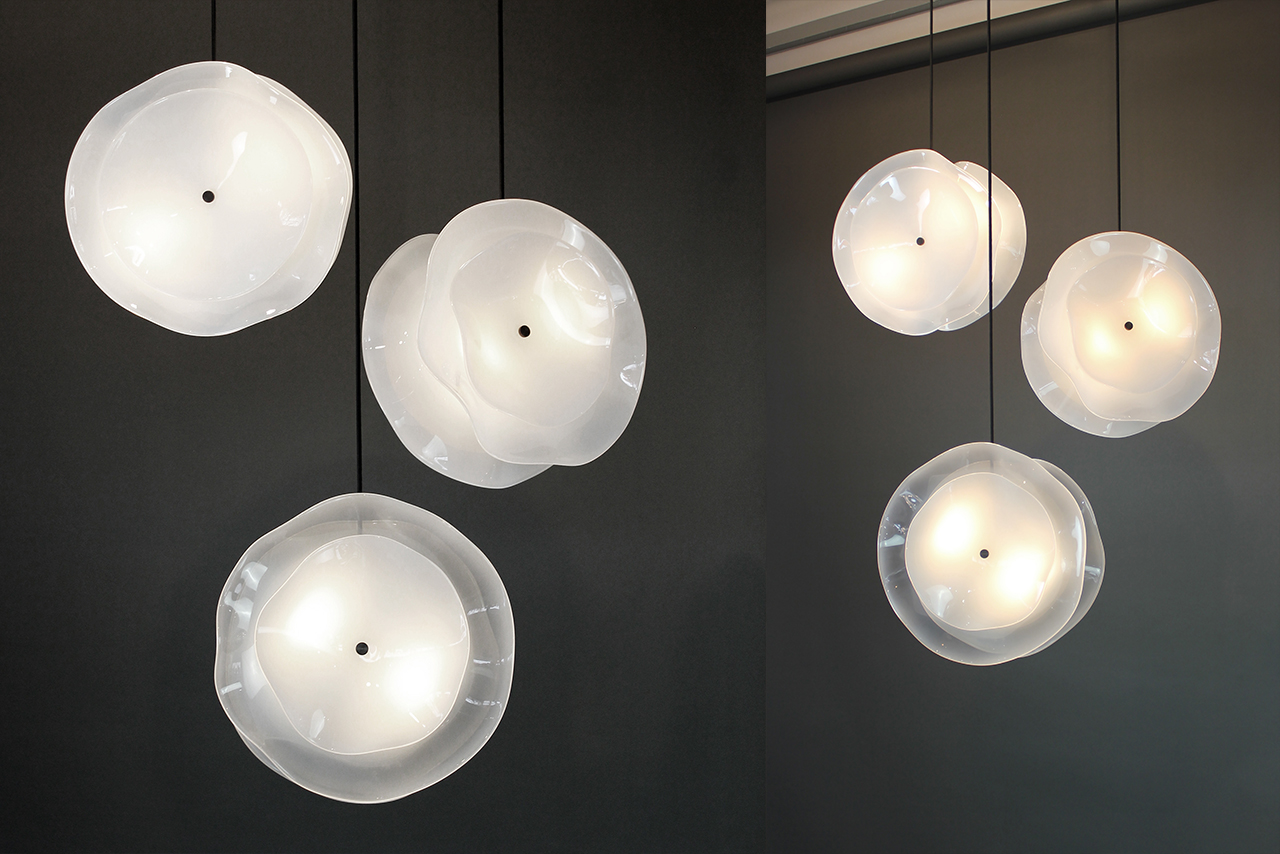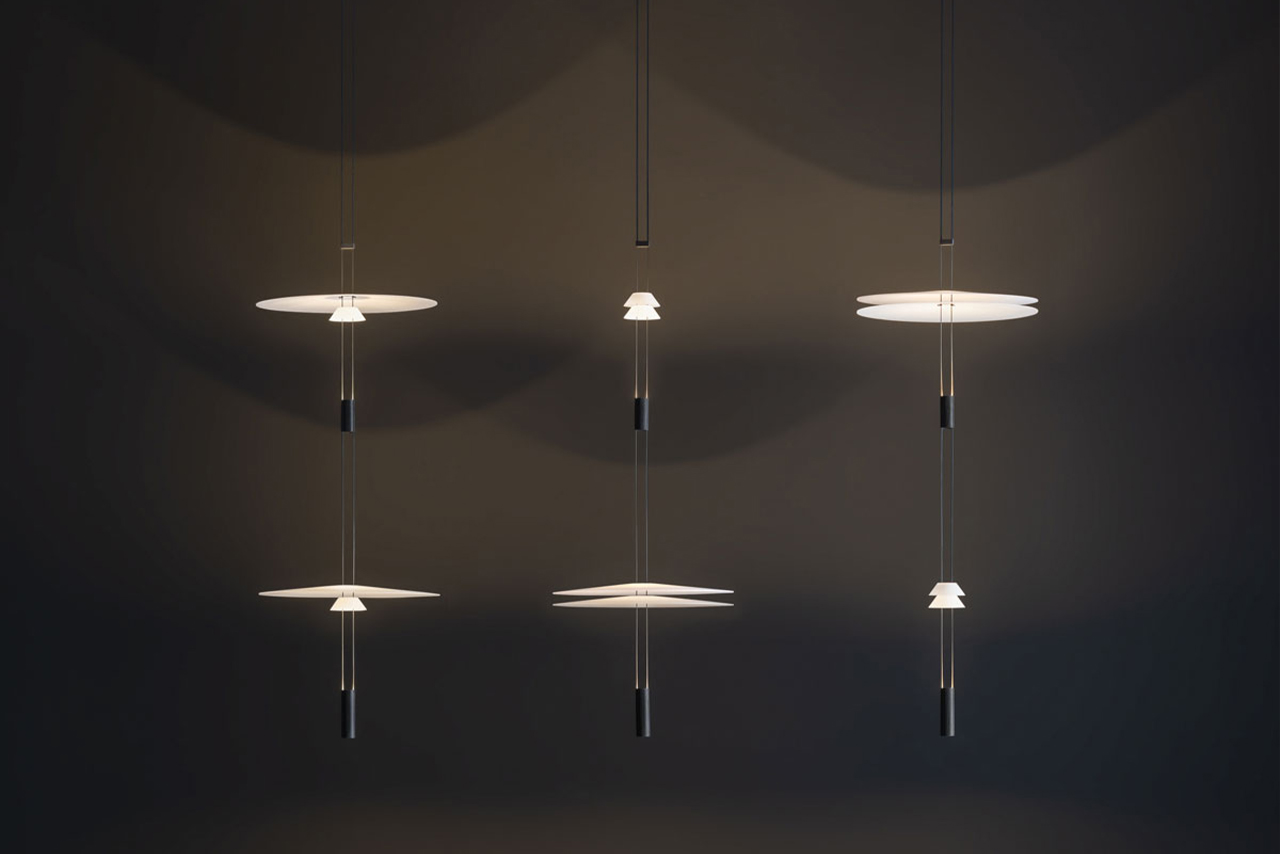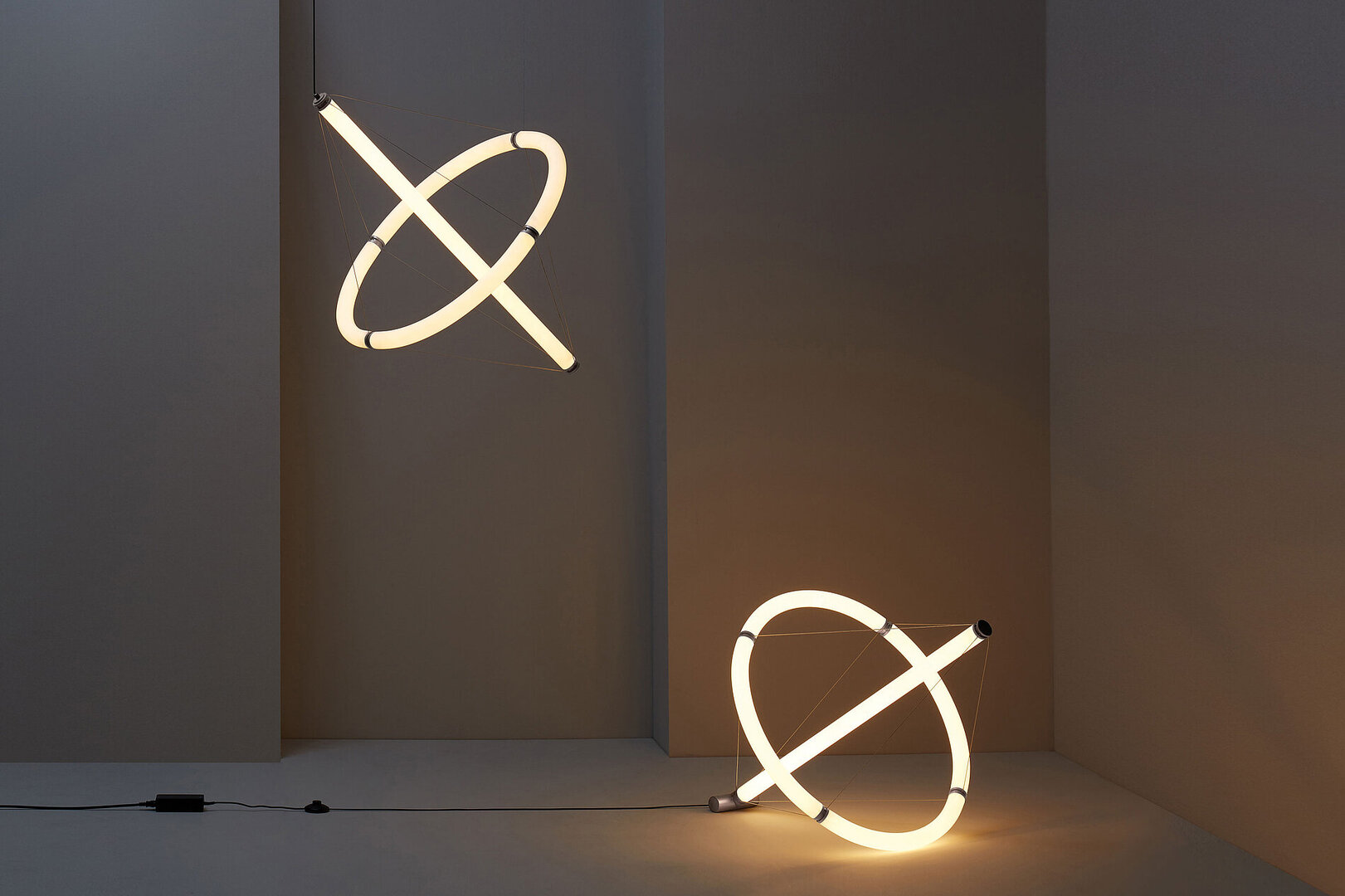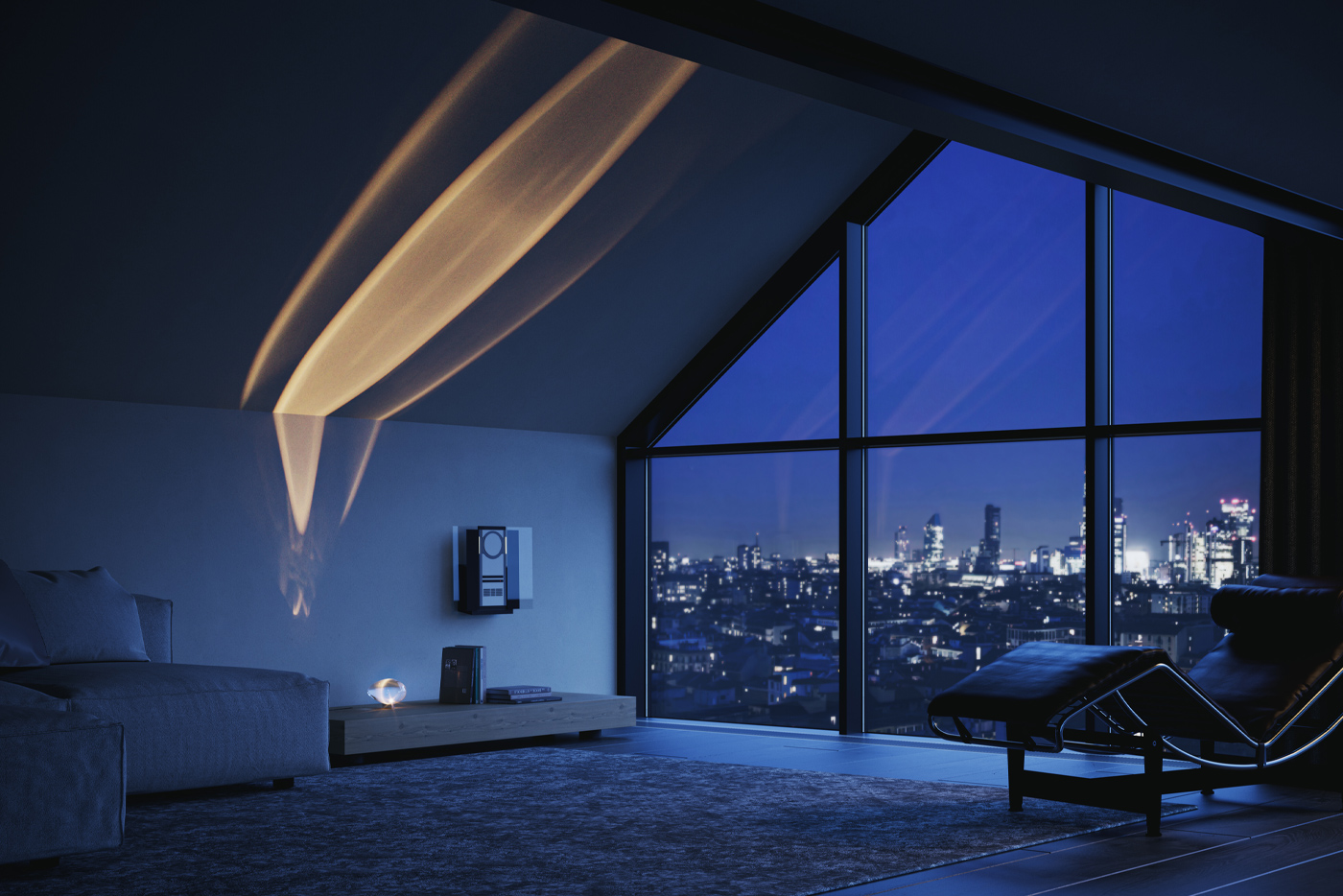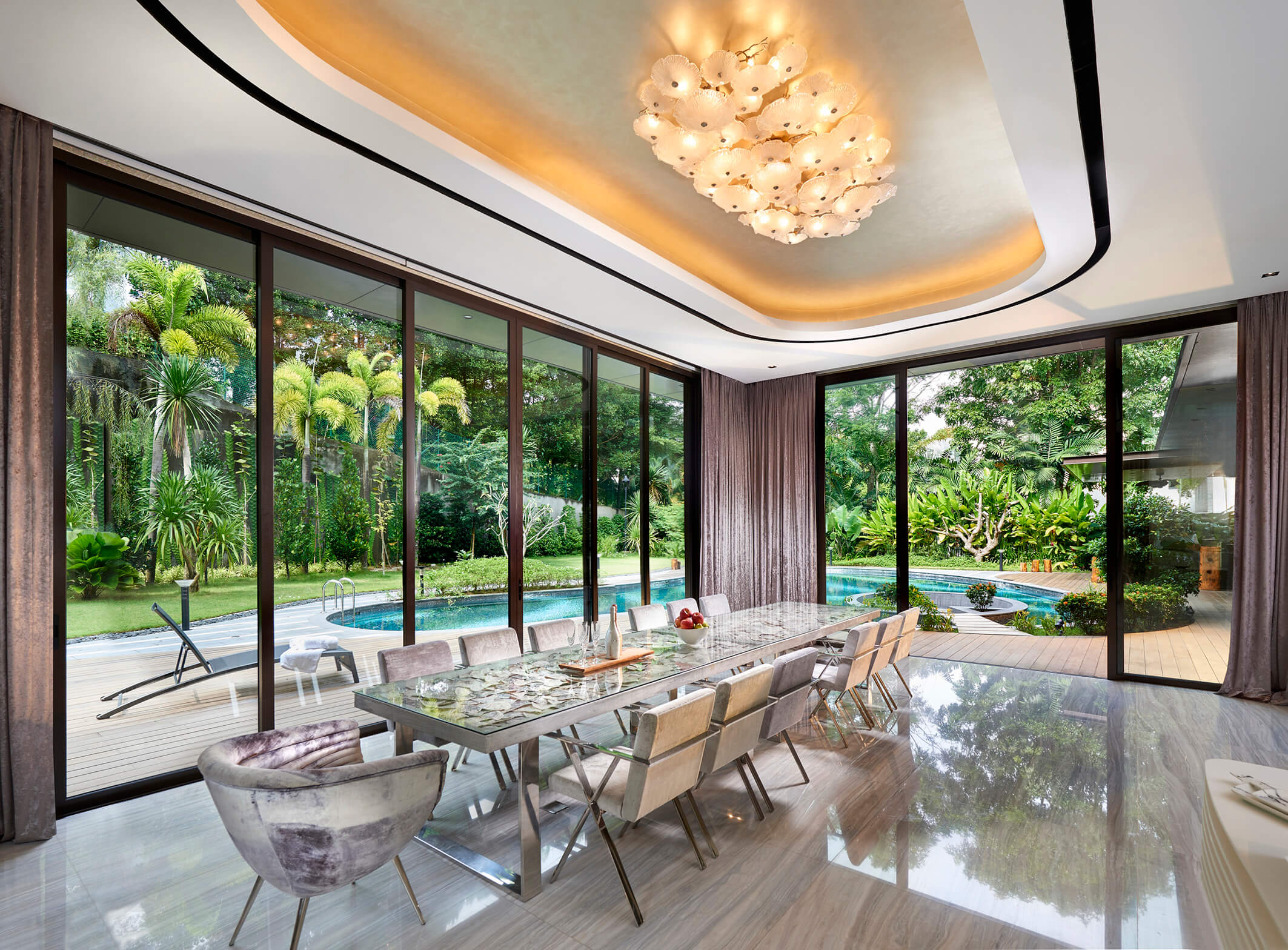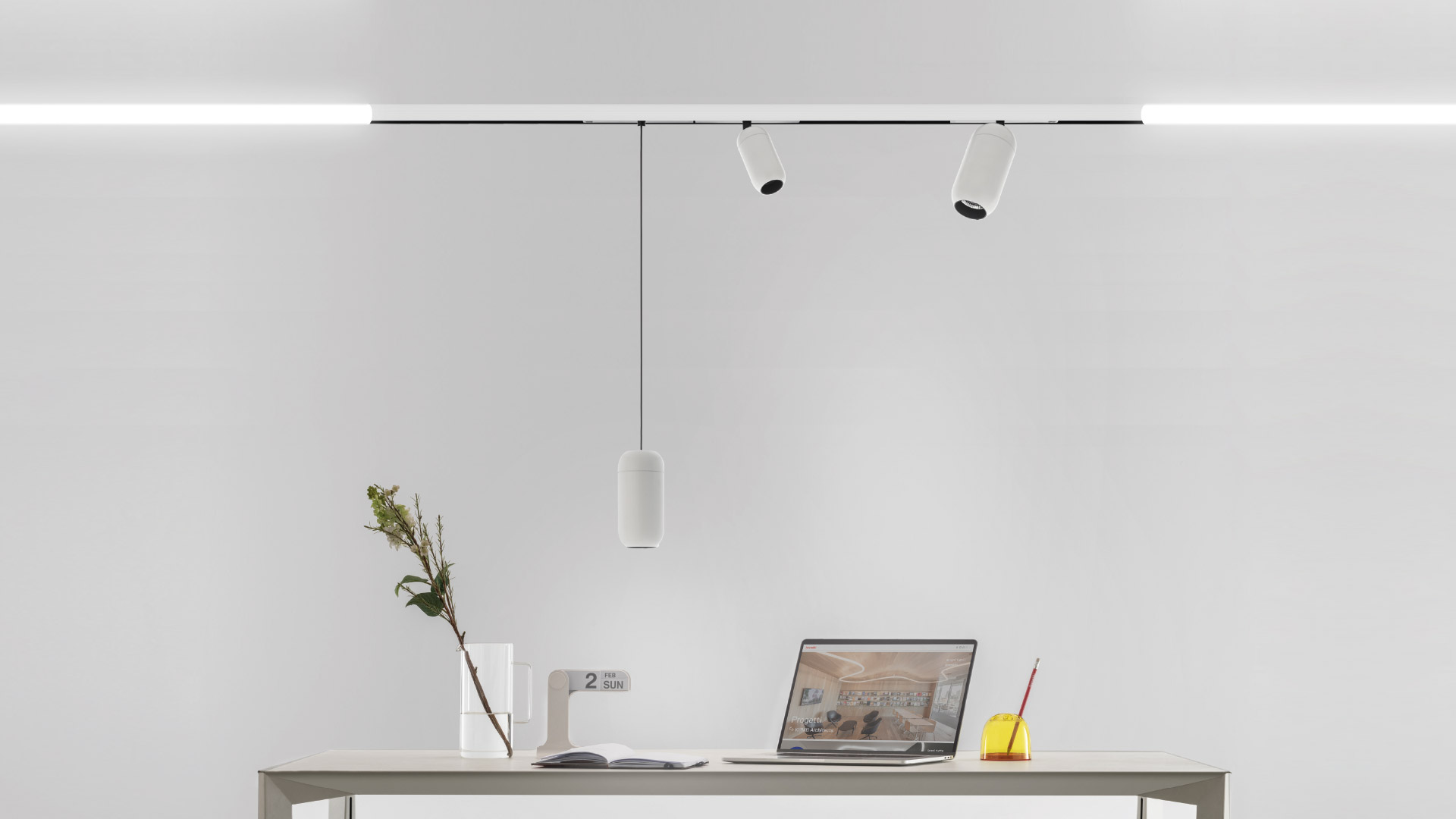From bud to radiant bloom
At the outset, it must be said that this fixture is not a project meant merely to appear beautiful; its design carries a specific visual language rooted in the life cycle of a tulip, and the designer has taken deliberate steps in realizing this idea. The metallic branches, organized in a systematic network extending downward and outward, are not merely decorative elements but a functional structure for distributing light. This multi-source distribution creates the ability to generate an even ambient light while simultaneously providing more focused beams for spatial accentuation, and it is precisely this duality that defines the identity of the space: overall calmness in service of localized emphasis.
The geometric form of the composition, rhythmic symmetry, and elimination of unnecessary details give strength to its visual legibility. The choice of a saturated color like blue for the body has a direct impact on the spatial perception; within the neutral context of the walls and wooden furniture, this color acts as a regulator of contrast and separates the structure from the background. The result of this visual separation is a certain sharpness that can move the space from stillness toward reflective activity and add a layer of energy without exhausting the eye.
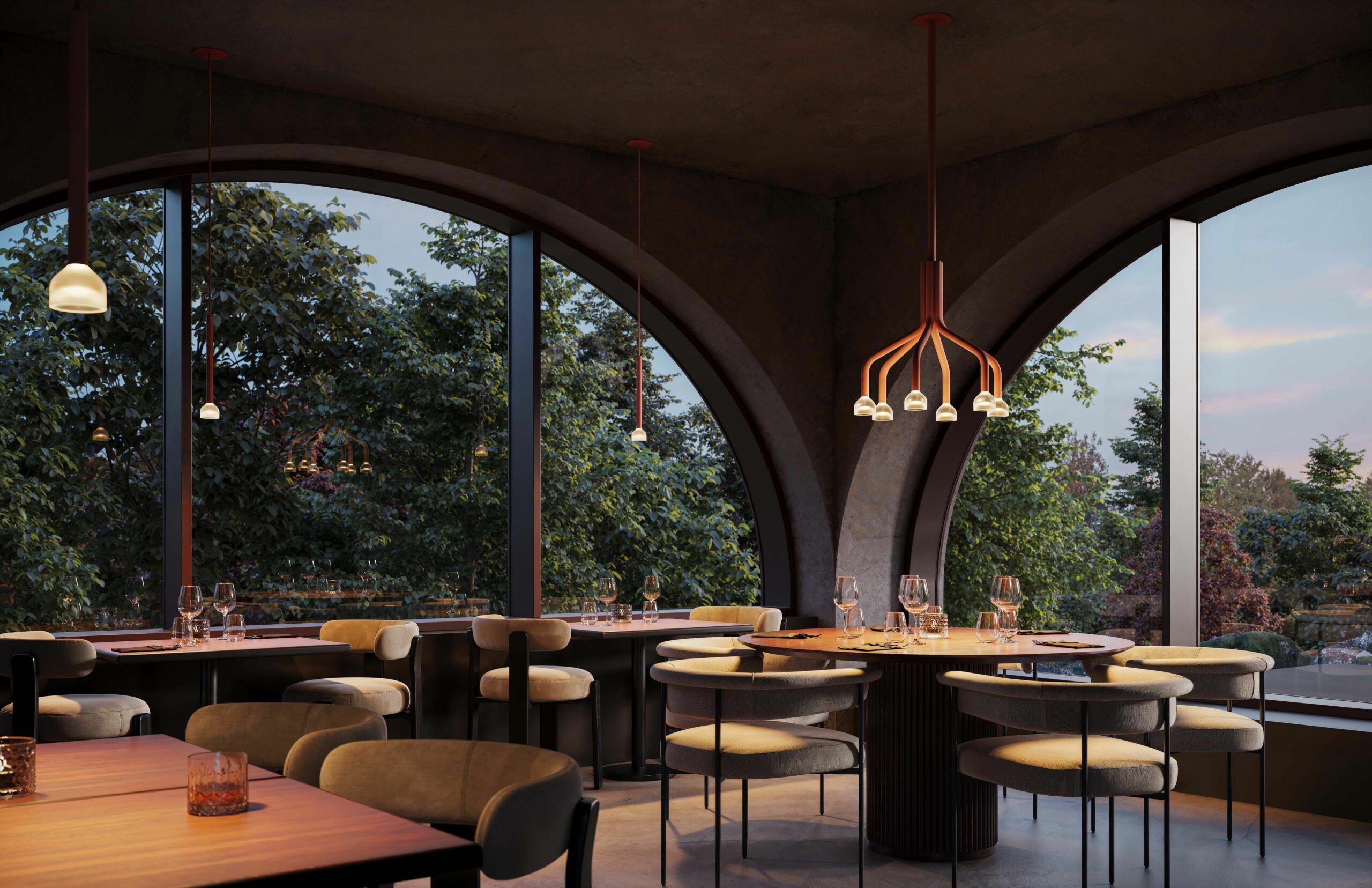
In terms of lighting performance, the declared specification of 150 lumens per diffuser is an important statement. Considering the number of light heads, the total luminous flux can be sufficient for medium to large public spaces, though the adequacy depends on the space’s intended function. For a lounge or café with individual tables, this configuration provides a layer of general light that, if needed, should be complemented by task or accent lighting. In the image, the presence of natural light from the tall windows softens the overall composition, yet in the absence of daylight, depending on the color temperature and color rendering index of the fixture, the reading of materials and hues may change, and this is precisely the point where more explanation in the product information would be valuable.
The three diffuser options, Bulb, Bud, and Blossom, translate the designer’s symbolic idea into different operational levels. The more closed forms are more focused, and the blossom-like form produces a wider beam spread. This variety in light diffusion allows the lighting designer to tune spatial geometry and light intensity using the same family of components, moving the product toward design flexibility. However, the absence of detailed technical data such as the exact light distribution, beam angle, glare index, and color rendering index makes professional decision-making more difficult.
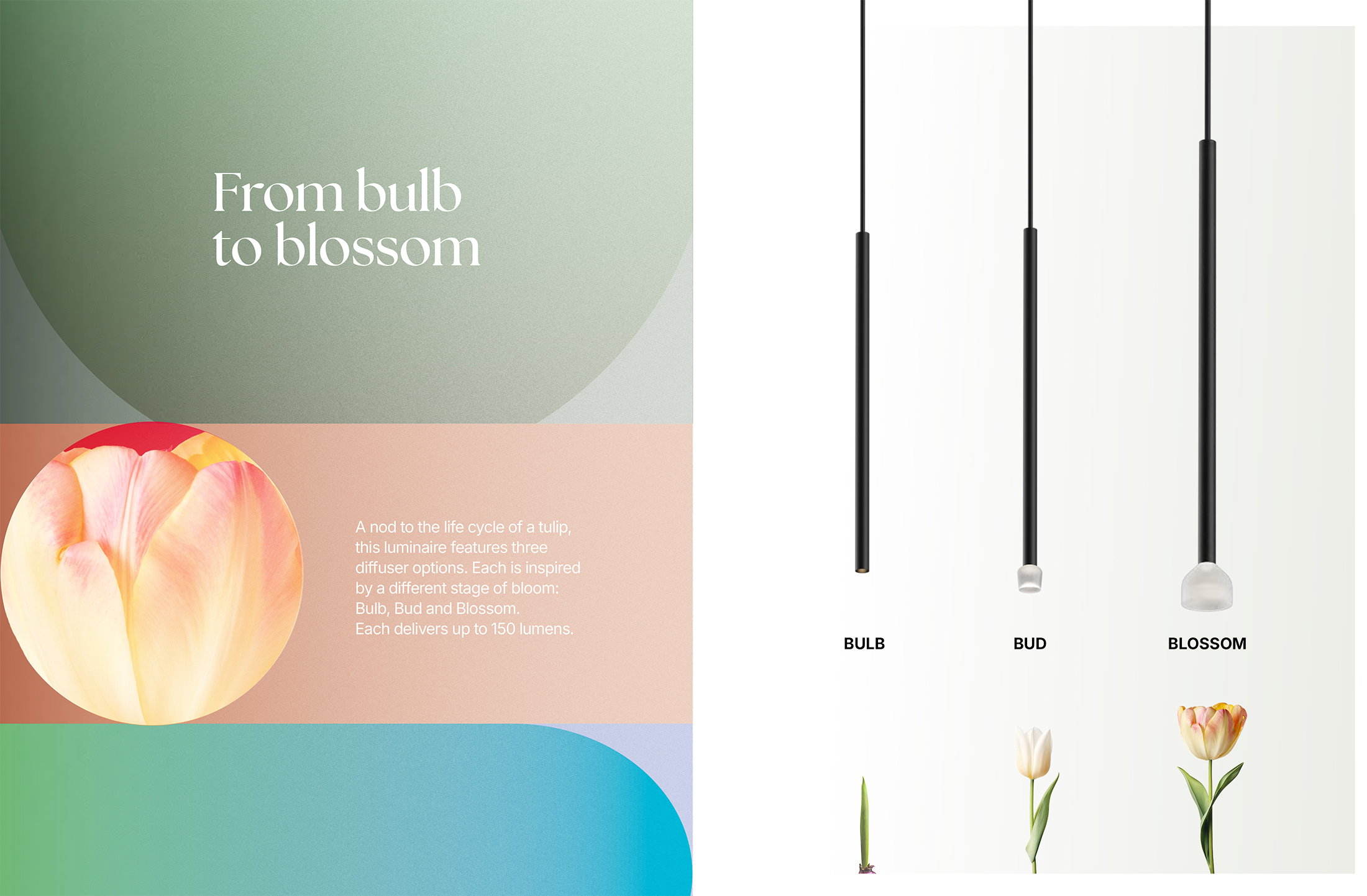
From a human and experiential perspective, the scale of the elements and mounting height in the image are well aligned with the double-height space of the windows. The suspension positions the visual center of gravity at an appropriate height, and the vertical clusters of light punctuate the tables; thus, the fixture fulfills a focal function while maintaining a proper proportion between architectural volume and luminous body. This harmony stems from a sensitivity to human-scale proportions, showing that the designer has carefully considered spatial ergonomics.
From a construction standpoint, the tubular structure of the branches, the multi-way joints, and the surface finish are critical. From the image, one can infer that a matte or semi-matte coating was chosen to reduce unwanted reflections and keep visual focus steady. However, questions remain regarding the canopy plates, maintenance access to the light sources, replacement procedures, and overall weight, all of which are decisive factors for high-ceiling installations. In local manufacturing contexts, producing metal parts of this technical complexity is feasible, provided the quality of joints and electrostatic coatings is controlled. Therefore, from a production perspective, the design is translatable to local fabrication but requires precise technical documentation.
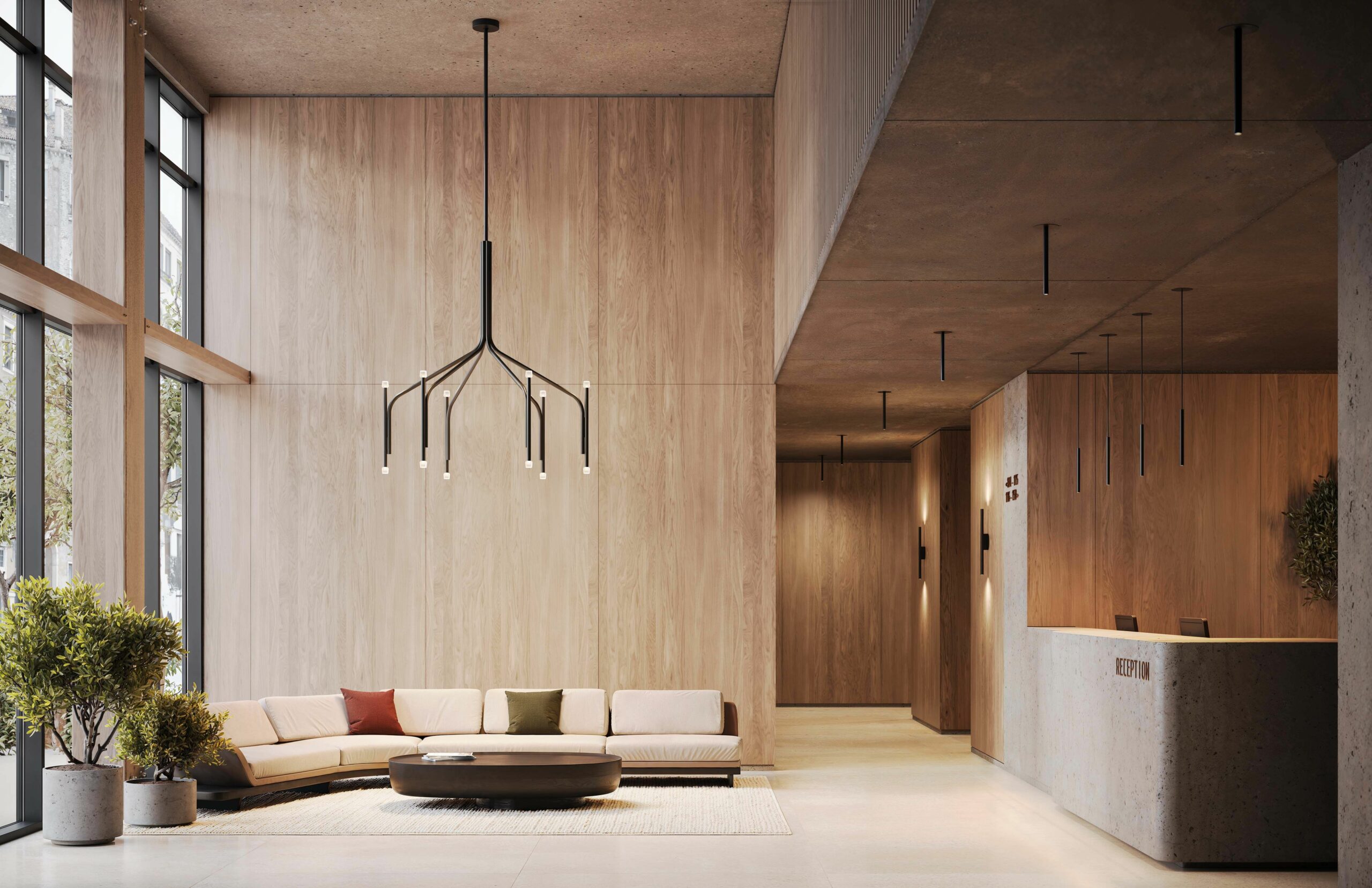
Conceptually, the fixture constructs a clear meaning: presence, growth, and transition. This meaning becomes more effective when the diffuser choice is defined according to daily function, the closed bloom for areas that require concentrated light, and the open blossom for creating joy and general radiance. Here, light acts as a storyteller of transformation rather than merely a provider of illumination. This narrative potential, when extended through the family of pendants and wall sconces, can generate a conceptual network within the space, inviting the observer to a continuous reading from one end of the space to the other.
A fair critique recognizes that the product succeeds in translating its conceptual and formal ideas into performance, and the flexibility of the product family stands as a genuine strength. The aspects requiring completion include the absence of essential technical details, information such as CRI, CCT, glare index, and controllable power are vital for precise lighting design. It would also be beneficial to provide options for adjusting branch height and beam angle to improve adaptability to different ceiling heights. Ultimately, I would recommend using warmer diffusers with broader dispersion in spaces intended for contemplative calmness, and more focused options where visual concentration is desired.
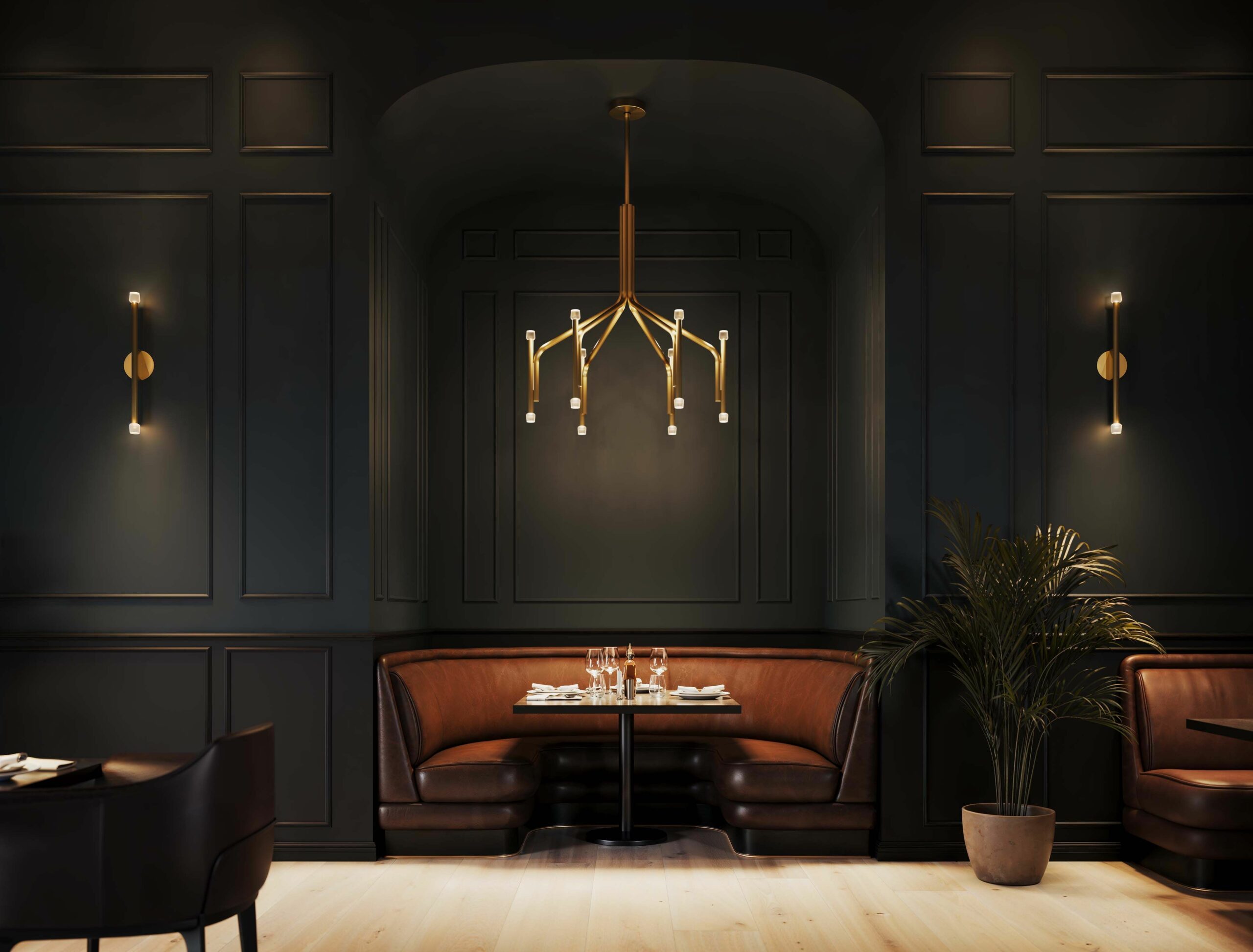
The overall conclusion is that this fixture has a clear voice; with the right technical tools, it can deliver both atmosphere and function effectively. What has been achieved here is the transformation of an aesthetic idea into a functional language.
